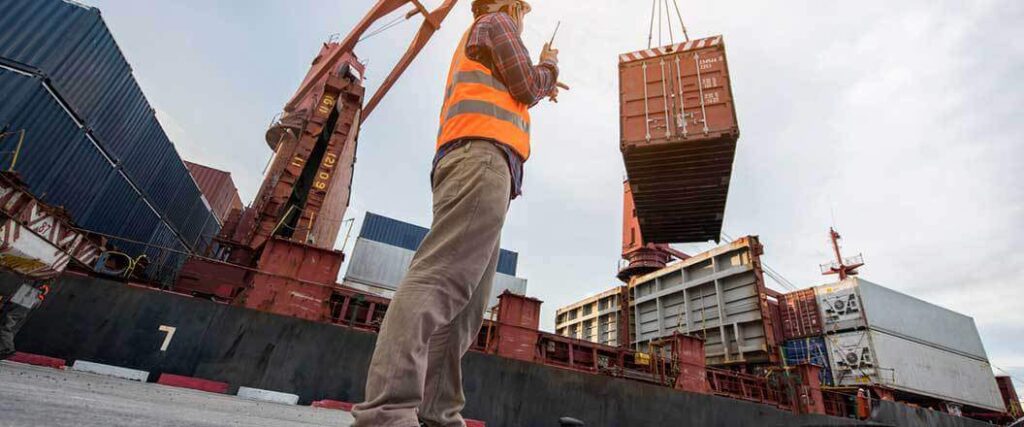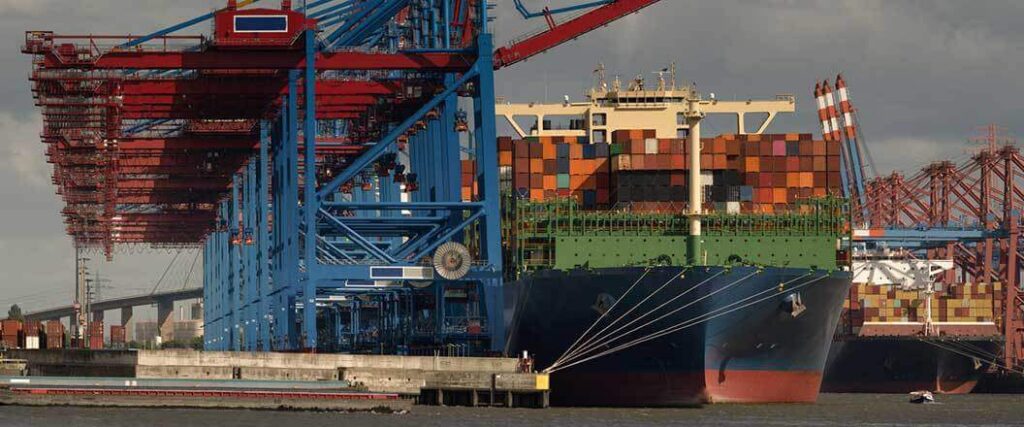High value cargo insurance is something you never want to need but should always make sure you have. Shipping valuable and pricey goods comes with risk. Whether the value of the cargo is obvious or not, it represents a significant investment worth protecting. Part of being a responsible carrier and shipper is knowing the best way to manage certain risks.
The exact value threshold of a shipment that makes it need high value cargo insurance is up to the individual carrier. In general, most cargo appraised at $100,000 or more, regardless of transport mode, needs additional coverage. High value cargo represents more risk for insurance companies, so rates are higher as a result.
Getting insurance coverage for your high value cargo means understanding what factors raise rates and how far policy limits can stretch.
In the shipping industry, high value cargo is frequently associated with high risk freight. Moving any commodity comes with some danger. The level and likelihood of danger are what insurance companies look at most when preparing their quotes.
Some dangers are the same regardless of the value of the cargo. Any truck, ship, or even aircraft can experience events that result in the loss of cargo.
A truck hauling $10,000 worth of scrap metal and another hauling $100,000 of new cars can slip on the same patch of icy road. However, the insurance company will end up looking more closely at the details involved in the loss of $100K worth of cars.
Insurance companies covering high value cargo may request additional information related to an accident such as:
The truth is that insurance companies lose money on every claim they must pay out. The bigger the payout, the more exclusions and exceptions an insurer is likely to add to the policy contract.
When it comes to high value cargo, there are also a number of non-accident factors to take into account.
Theft is actually a big problem for many trucking companies and it isn’t always the gold and jewels that go missing. Any high-demand product that can be sold easily and quickly is at risk.

In the cargo shipping industry, high value cargo is anything valued at $100,000 or more. The amount has become the universal standard in the U.S. because of the Federal Motor Carrier Safety Administration (FMCSA).
The FMCSA requires all commercial vehicles registered in the U.S. to carry liability insurance and $100K has become the most standard limit of liability plan offered by insurance companies. It’s actually the minimum that most insurance companies offer to carriers.
Liability limits for carriers organizing shipments on vessels and aircraft are similar enough for the term 100K cargo insurance to apply to most major transport modes, including rail.
Merchandise commonly considered high value includes:
Many items above are thought of as luxury items. When shipped in bulk, the commercial value easily exceeds $100K. However, someone shipping smaller amounts through Less than Truckload (LTL) or a similar arrangement doesn’t always qualify.
However, a shipment whose total value is calculated as less than $100K, whether as a full truckload or LTL, may still need high value cargo insurance based solely on risk factors.
A shipment is labeled as high risk if there is a greater than average possibility of damage or theft.
Common high risk factors of products include:
Anything made of glass, porcelain, or ceramic usually qualifies. Cut and polished stone slabs like those used for tables and countertops are also prone to cracking if improperly handled.
High value stones, like certain marbles, easily fall into high value and high risk classifications when shipped in bulk.
Cargo traveling in reefer trailers and containers is often excluded from standard policies for fear of equipment breakdowns resulting in product spoilage.
Any electronics, high-end or not, are at risk because of how frequently they are stolen. The same can be said for cosmetic products. Individually they aren’t very valuable, but because so many are boxed together, their worth easily adds up.
| Type of Cargo | Percentage of Reported Incidents |
| Home & Garden | 19% |
| Food & Beverage | 15% |
| Electronics | 12% |
| Building & Industrial | 7% |
| Auto Parts | 6% |
| Personal Care | 5% |
| Clothing & Shoes | 4% |
These statistics are specific to the U.S. trucking industry, so you may get different numbers in other parts of the world. However, it does serve as a general guide for why some commodities will receive higher rates for insurance coverage.
Practicing standard risk management as a shipper is important for not only mitigating risks associated with theft, but also with damage. If you do need to make a claim, insurance companies may ask which precautions you have in place.
Other factors that qualify a shipment for high risk status include:
Routes and timing don’t always work in your favor. You may not have a choice but to send shipments through roads with dangerous turns or put items on a ship during hurricane season. However, if you’ve managed to earn a bad reputation with insurance companies and carriers for poor packaging and safety practices, you are considered the risk factor.
Frequent issues with your shipments could raise your cargo insurance premiums into high-risk/high-value range no matter what the actual worth is.

Unlike rates for lower-value items that may vary depending on transport mode, high value cargo rates tend to be the same across the board.
The general average for high-value/high-risk cargo insurance with a $100K policy limit is $800 to $1,400 a year.
Your final price quote depends somewhat on:
As mentioned earlier, the more valuable or high risk a commodity is, the more exclusions a policy is likely to have. Calculating a 100K cargo insurance price then has to do more with how completely you want to cover losses.
Also recall, a $100K limit is only a starting point. High value shipments can easily exceed that number. As the limit goes up, so does the price range for truck cargo insurance or other transport-specific coverage plans.
When speaking with your insurance agent, they are likely to ask you about the nature and frequency of your cargo shipments. Depending on your answers, they may offer some different coverage options.
Common add-ons to high value cargo insurance include:
Beyond these specific options, there are other specialty policies. Shipments through certain parts of the country or world benefit from theft and hijacking coverage options. If you are forced to work with a carrier you aren’t familiar with, perhaps under emergency circumstances, you can ask about dishonesty coverage, which applies specifically to covering loss and damage due to driver actions.
At the end of the day, the cost of cargo insurance depends on how comprehensive it is. The more exclusions you want to avoid or the more specific the coverage list is, the higher your annual premium payments are.
These add-ons are also not exclusive to high value cargo - any shipment can benefit from these protections. View insurance as an investment protection service, and it makes sense for greater investments to need more protection.
Hotshot trucking services have become more popular as people find new and creative ways to fill supply chain gaps.
Hotshot trucking service is generally an individual or small company dedicated to moving LTL shipments on very tight schedules.
Many of these services run with standard heavy-duty pickup trucks and trailers rather than big rigs. Although it seems informal, drivers of hotshot loads still need to comply with the FMCSA insurance requirements.
Therefore, their liability limits are the same and $100K or more worth of cargo is considered high-value/high-risk. Arranging 100k cargo insurance coverage is still the best way to protect your investments when using hotshot trucking services.

Despite every effort you or the carrier make to ensure safe delivery, accidents happen. Insurance rejection and denial also remain possible every time you submit a claim.
The biggest limit of every insurance policy, high value cargo or otherwise, is the need for exact details and procedures during the claims process.
The most frequent causes of cargo insurance claim rejection or denial include:
Some of these reasons might seem trivial. For example, it isn’t unheard of for damage to go unnoticed until products are unboxed or otherwise assembled.
Marine, air, and motor truck cargo insurance provide financial protection, but only under specified circumstances. The more specific your understanding, the more likely you are to elect coverage plans that work for your business needs.
Whether you are moving $5,000 or $500,000 worth of cargo, you want your business interests protected. High value cargo insurance is more necessary than you realize. With inflation on the rise worldwide, the average value of cargo shipped in bulk has never been higher.
Freight Insurance Coverage is here to help you get the financial protection you need and help you in arranging the quality shipping services you deserve.
Call us today at (866) 975-0749 to speak with a representative directly. Need protection now? Request an online quote today!
Freight Insurance Coverage
315 NE 14th Street #4122
Ocala, FL 34470
I own a small courier/same day delivery business. We specialize in jewlery and precious metals. Most of our deliveries are within a 50 mile radius. No storage strictly rapid/same day delivery. Looking for a insurance quote. We typically do about 2 deliveries a day.